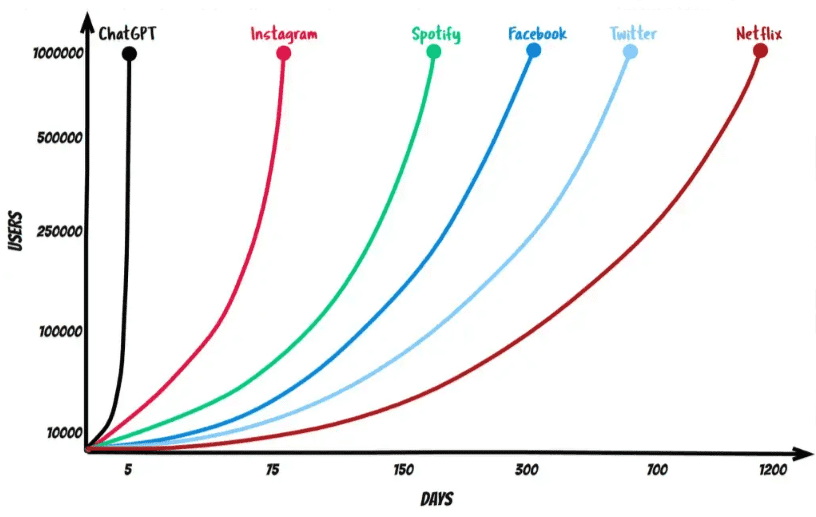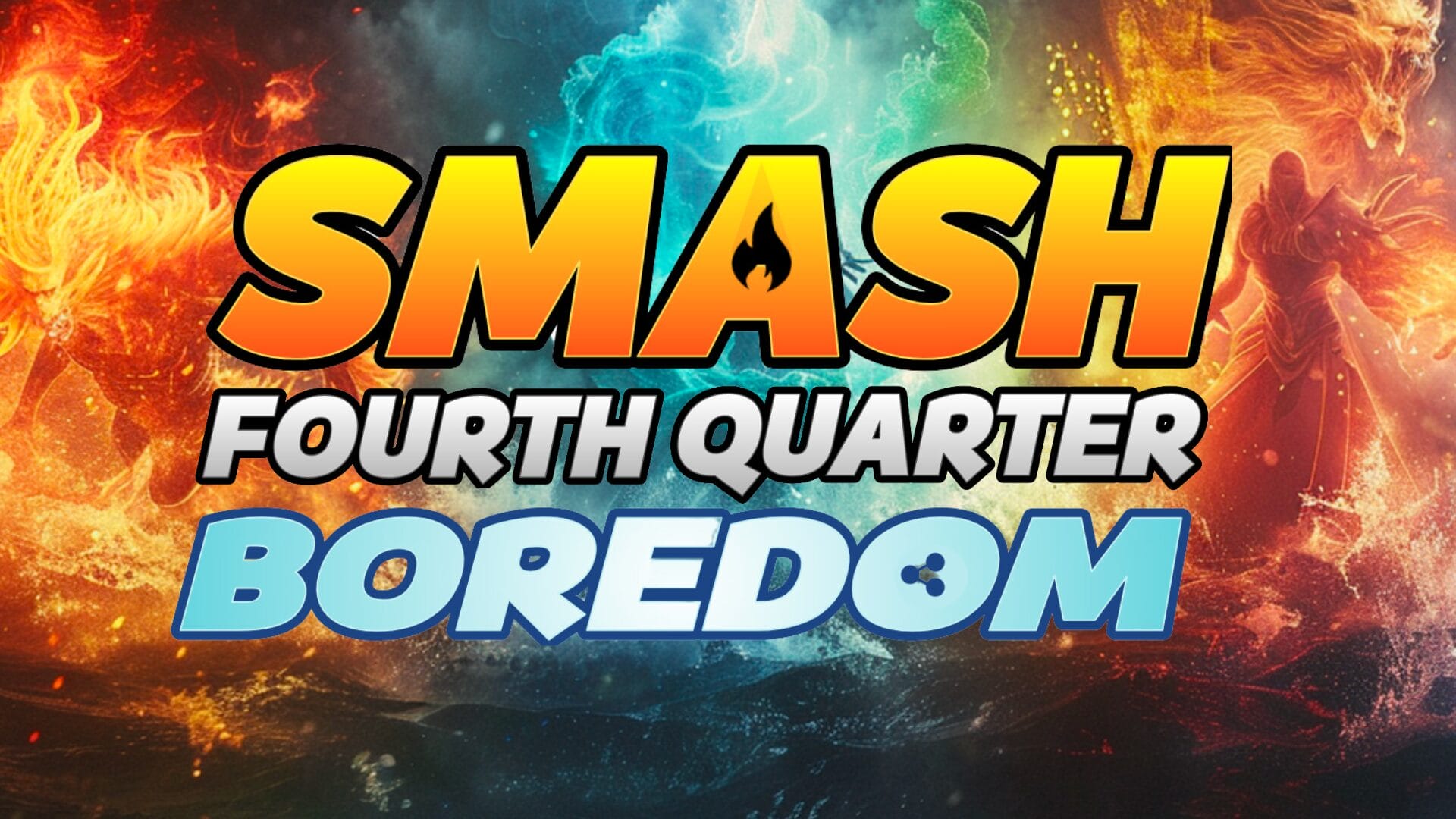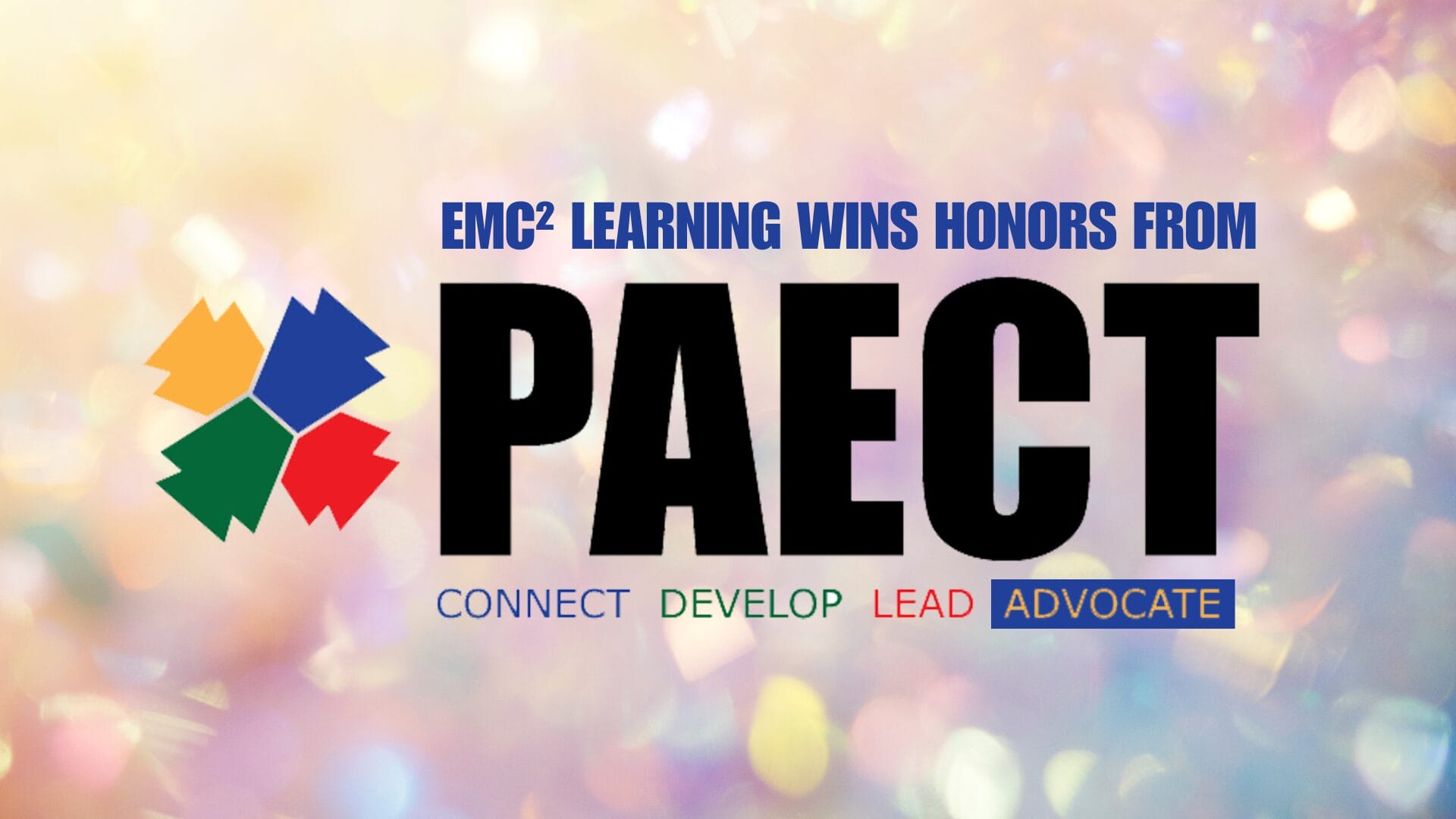
The 2023 Future of Education Technology Conference might be in the books, but the future of education is most certainly here! And since all of those big ideas from this year’s event are still fresh in our minds, we here at EMC² Learning wanted to take this opportunity to share a virtual “brain dump” to help teachers everywhere get a clearer sense of where the state of education is and where we think it might well be headed in the days, weeks, months and years to come. Unlike so many other fancy edtech solutions out there — EMC² Learning is proudly designed with students and teachers squarely at the center, so that we always remember the fundamental truth that this profession is, was, and always will be about forging authentic human relationships with those who we serve. That’s why our tagline celebrates “Engagement At The Speed of Life.” Because tech fads come and go — and teachers simply don’t need “just another thing” to add to their plates. As working classroom teachers ourselves, we are huge believers in committing ourselves to becoming lifelong learners about all things related to student engagement and ways to meet the changing needs of the education profession.
The only question, then, is how we can help today’s teachers best leverage new and emerging technologies (including those made possible to artificial intelligence) to craft meaningful, memorable learning experience for learners of all ages. Because for as firmly grounded as we remain in the authentically human act of teaching and learning — we must also recognize that the tech world moves at lightning speed. And teachers everywhere deserve access to materials and resources to help them set their students up for success well into the 21st century and far beyond it.
So with that in mind — here are our 23 biggest takeaways from FETC 2023 (in no particular order).
23 Big Takeaways from FETC 23
1. If we were playing a drinking game where we drank each time we heard the words “ChatGPT,” we’d all be dead right now.
No joke. ChatGPT and artificial intelligence took the entire conference by storm, and it was virtually impossible to attend a main stage keynote or a breakout session without hearing some combination of these subjects being the talk of the day. If you’re an educator and your school has not yet started providing serious training and support on how teachers, students, and school administrators can navigate what constitutes authentic assessment and learning in an age of artificial intelligence — you are seriously missing out on where the future of education is headed.
But here’s the good news: if you’re reading this post, you are still well ahead of the game as we are still very, very early in the lifecycle of this radically transformational technology. ChatGPT (short for “Generative Pre-trained Transformer,” is a state-of-the-art language generation model developed by a company called OpenAI) was only just launched on November 30 of last year and it has gained widespread popularity, reaching an astonishing 1 million users within five days. And if industry experts are correct in their assessment, the powerful technology at the heart of this unlikely startup sensation could well be worth upwards of some $30 billion dollars.
In short: that’s a game changer. And the best future-ready classrooms will learn quickly how to use it to their advantage.
2. Artificial Intelligence Isn’t Going Anywhere
In late January of 2023, Microsoft announced that it was making a “multiyear, multibillion-dollar” investment in OpenAI, the San Francisco artificial intelligence lab behind the experimental online chatbot ChatGPT — to the tune of $10 billion dollars. That same month, Google’s parent company, Alphabet, asked cofounders Larry Page and Sergey Brin for help after issuing a “code red” following the release of OpenAI’s writing tool. Ironically, the genesis of ChatGPT actually was first envisioned as a sort of spinoff project inspired by Google’s own 20% time initiative.
Perhaps even more impressively, the version of ChatGPT that is currently taking the world by storm is technically powered under the hood by a software known as GPT-3 (think cell phone coverage, with the 4G network replacing 3G). And guess what? OpenAI is already hard at work on its successor — and have reported that GPT-4 will have 100 trillion parameters, as opposed to the 175 billion parameters that GPT-3 is currently trained on.
To put those figures in perspective: while ChatGPT-3 can write a half-decent five paragraph essay in less than 5 seconds, GPT-4 will have the power to write an entire novel in a fraction of the same time.
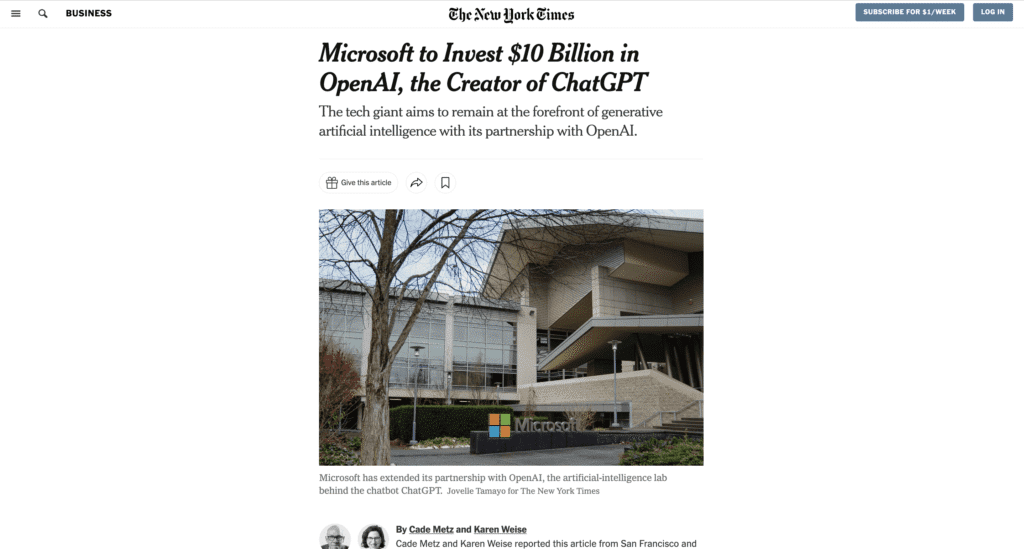
3. Competition is Heating Up in The Artificial Intelligence Space
There’s an old saying in business that competition breeds innovation. And as far as customers are concerned, that’s a really good thing. In a January 2023 article published by the Washington Post, Nitasha Tiku observed: “ChatGPT is quickly going mainstream now that Microsoft — which recently invested billions of dollars in the company behind the chatbot, OpenAI — is working to incorporate it into its popular office software and selling access to the tool to other businesses. The surge of attention around ChatGPT is prompting pressure inside tech giants including Meta and Google to move faster, potentially sweeping safety concerns aside, according to interviews with six current and former Google and Meta employees.”
In layman’s terms? That means we’ve got not one, not two, but three major players who are going to be aggressively pursuing the myriad tools and capabilities that AI has to offer in the months ahead. And when big companies compete for user eyeballs (more on that later!!), everybody wins.
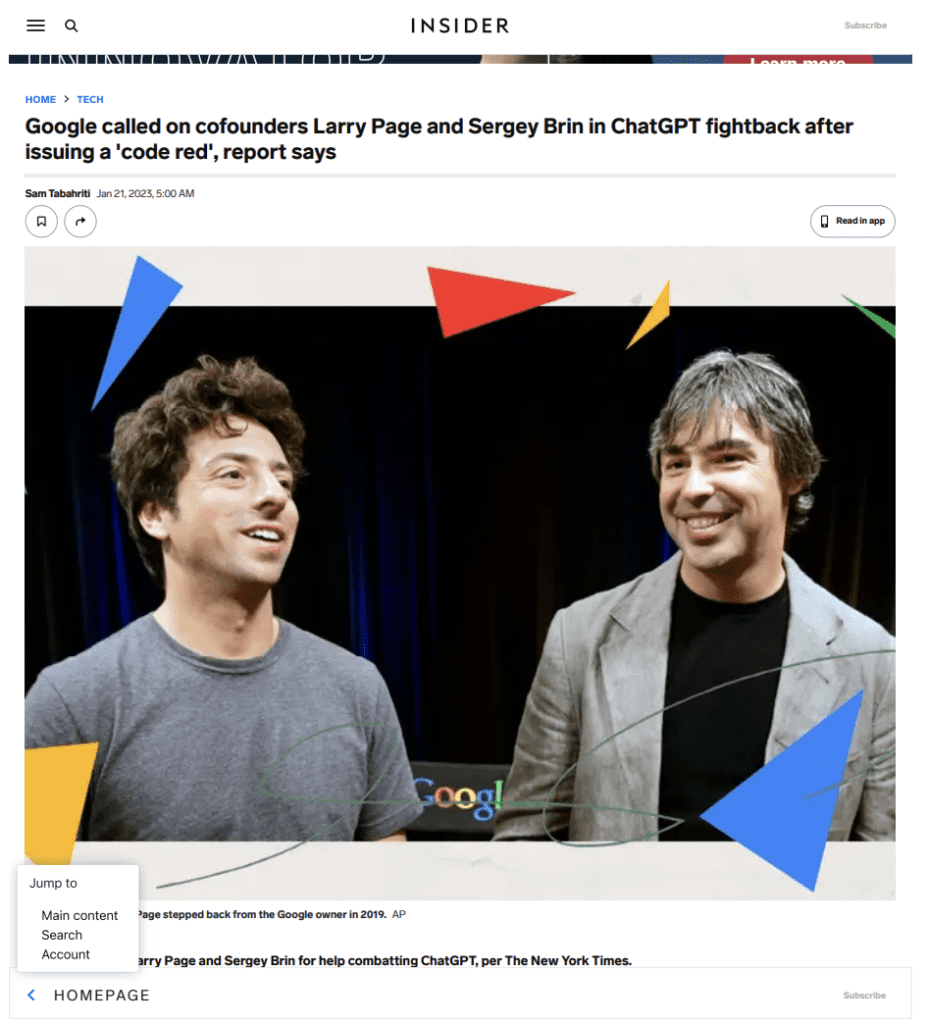
4. And Competition Leads to Innovation
In late January, Microsoft announced that it was making a “multiyear, multibillion-dollar” investment in OpenAI, the San Francisco artificial intelligence lab behind the experimental online chatbot ChatGPT. That same month, Google’s parent company, Alphabet, asked cofounders Larry Page and Sergey Brin for help after issuing a “code red” some three years after the duo had stepped away from their formal advisory roles with the company.
(Fun fact: ChatGPT was actually was first envisioned as a sort of spinoff project inspired by Google’s own 20% time initiative).
5. The Next Half Decade Will Be Massive for Artificial Intelligence
According to Zippia, by the end of 2022, AI has already created a total of a staggering 58 million jobs — and that’s barely a fraction of where this industry is headed in the years to come. Remember how quaint and silly it looks to see Katie Couric asking her produce to describe “What is Internet?” in 1998? Don’t look now, folks, but we’re well on our way to a future where folks who didn’t quite have a handle on Artificial Intelligence could well look just as out of touch in just a few short years. All artificial intelligence future predictions show an overwhelming increase in the implementation of AI in the business sector, and the global AI market is predicted to reach $90 billion by 2025.
Our schools need to prepare our students for their future, not our past.

6. Technology Has an Uncanny Ability to Desensitize Us to the Miraculous
It’s kind of amazing how quickly we become desensitized to the miraculous. But the wild and wonderful world of ed tech moves pretty darn fast. The same holds true to life outside of the classroom. And believe it or not, the ubiquitous yellow first down line marker in NFL games has been at play for more than a quarter of a century. As Joss Fong explained in a 2019 article for Vox: “Since the late 1990s, the virtual yellow line has been quietly enhancing football broadcasts by giving viewers a live, intuitive guide to the state of play. The graphic is engineered to appear painted on the field, rather than simply plopped on top of the players, so it doesn’t distract from the game at all.”
While the state of the art technology costs somewhere in the neighborhood of $20,000 to pull off for every game — viewers around the world would be hard-pressed not to agree that its inclusion has made watching NFL games infinitely more enjoyable and accessible for fans of all ages. These days, it’s almost unthinkable to imagine watching a football game without that clear first down marker line on our TV screens to help us “get in the game.”
Now imagine the power of bringing the clarity and user-friendliness of that ever-present yellow line into your classroom… for a fraction of the cost. (Have we mentioned how sold we are on the power of AI yet?!)

7. Dall-E 2 is Delightful
ChatGPT might be the biggest name in Artificial Intelligence and edtech today, but the brains behind it have actually been hard at work developing their software for quite some time on another venture you might have heard about. It’s called Dall-E 2, and it’s a new AI system that can create realistic images and art in a variety of styles using no more than a description written in natural language. Put simply: you use everyday human language to describe exactly what you’d like.
See those images in the row above this list item? They were entirely generated by Dall-E, using the prompt “draw me an astronaut riding a T rex through an underwater kingdom in the style of an animated coloring book for children.” Ditto for the exploding music note image from a few items back.
Whoa. We live in the future!
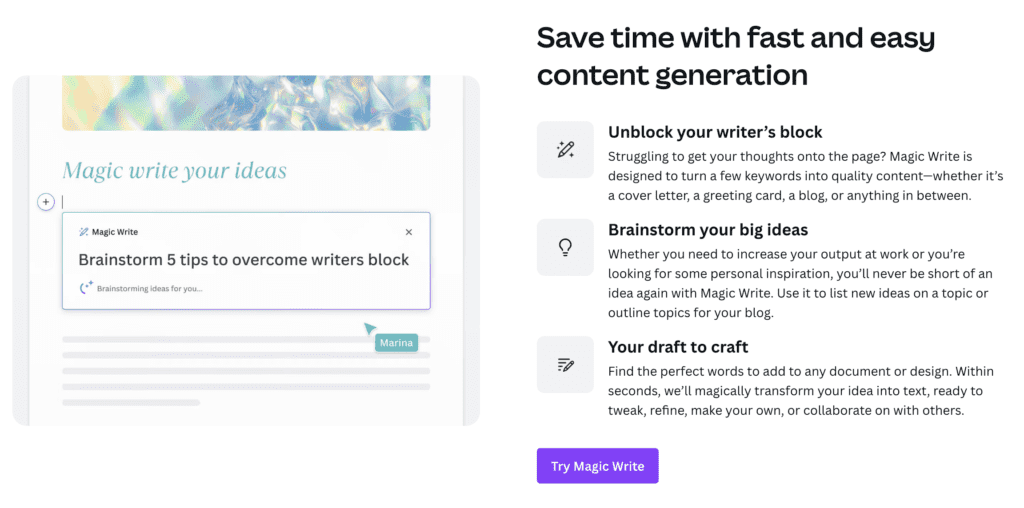
8. ChatGPT Isn’t The Only Game In Town
Are you a Canva user? If so, you absolutely must take their all new Magic Write feature for a spin. It’s basically ChatGPT built directly into the already robust Canva editing suite — which means drafting every stage of your ideas, outlines, emails, visuals, videos, marketing materials and just about anything else that you can imagine can be done from the comfort of a single software. It’s also a big reason why setting up elaborate “gotcha” systems that look to ban Artificial Intelligence will likely prove both frustrating and fruitless for educators and administrators across the board.
Which reminds us…
9. AI Can Literally Supplement (or Replace) Most Generative Tasks. And Most People Would Never Even Notice.
See that picture? It was completely generated by artificial intelligence (more on that later, too). And while diehard music aficianados out there will rightly point out that the errant eighth and sixteenth notes that surround the explosion don’t look quite right — at a quick glance, the image is certainly more than passable enough to convey the main idea to the average person who might just be breezing past it on their regularly scheduled walk or doom scroll. But AI visual artwork is just the start. Artificial Intelligence is actually really, really good (no for real — like REALLY good!) at crafting original works of — get this — musical compositions with little more than a few keyword prompts and a bit of technical magic.
Here’s the abstract of where AI-generated music might be headed, courtesy of Google’s MusicLM project:
Abstract We introduce MusicLM, a model generating high-fidelity music from text descriptions such as “a calming violin melody backed by a distorted guitar riff”. MusicLM casts the process of conditional music generation as a hierarchical sequence-to-sequence modeling task, and it generates music at 24 kHz that remains consistent over several minutes. Our experiments show that MusicLM outperforms previous systems both in audio quality and adherence to the text description. Moreover, we demonstrate that MusicLM can be conditioned on both text and a melody in that it can transform whistled and hummed melodies according to the style described in a text caption. To support future research, we publicly release MusicCaps, a dataset composed of 5.5k music-text pairs, with rich text descriptions provided by human experts.
So does this mean that our students looking to compose music (or write books or paint pictures) are out of a job? Not so fast. Because…
10. Anticipatory is Offense. Agile is Defense. Any Task That Can Be Automated Can (And Often Should) Be Outsourced.
If there was one single thread that we noticed throughout the 43rd annual FETC conference, it’s that basic operational skills can easily be replaced by computers in order to free human beings up to do meaningful, memorable work at those highest levels of creative thought. From the opening keynote with noted futurist and author Daniel Burrus to the closing sessions after all the bells and whistles of Bourbon Street had faded into the background: the power and potential of creative work remained strikingly clear. As we learn how to outsource so much of our everyday lives to computers and machine thinking and learning, we get back a ton of time to start doing the sort of thoughtful, empathetic, and creative work that only humans can do. Put another way: creativity and creative problem solving is the key piece of our humanity that is not going to easily be automated.
So what are our classrooms doing to prepare tomorrow’s learners for a world in which their success and happiness will largely be defined by their creativity?
11. Merlin is Magic
While ChatGPT isn’t technically what one might call an open source software (software with source code that anyone can inspect, modify, and enhance) the developers behind it have permitted its basic functionality to be loaned out to all sorts of third party platforms that help it do some really neat stuff. One of our favorites is Merlin — a Google Chrome extension that allows users the ability to summon (or dismiss) a virtual pop-up assistant with full access to ChatGPT’s phenomenal cosmic powers without leaving the comfort of whatever website they are currently browsing.
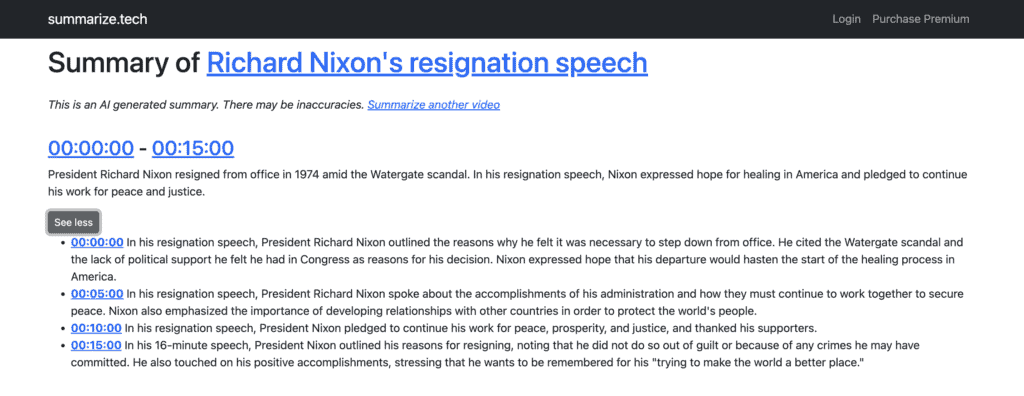
12. Summarize.Tech is a Sweet Tool for Accessibility
Another brilliant example of the tech behind ChatGPT at work can be found by visiting Summarize.tech. While the site itself isn’t all that flashy (leading us to believe that it’s obviously still very much in a beta stage, and will no doubt be a prime candidate for being absorbed by a much larger — and better funded — company in the years to come), it is a phenomenal resource for making sense of larger and longer videos like the kind that you can find on YouTube. Simply copy and paste in the URL of any online video, and the AI powered website will automatically spit out a timestamped summary of the key points and most important takeaways.
13. Next Gen Tech Can Make The World Even More Captivating…
One of the most charming applications of educational technology we encountered at FETC this year was in the incredible AI-powered software called Novel Effect. If you didn’t have the chance to catch these folks when they were on Shark Tank way back in season 9, it’s a must-see. As you read any one of the titles in their ever-expanding libraries of children’s stories aloud, the Novel Effect app uses AI listening software on your phone (just like you might use it to say “Hey Siri!”) and responds to your voice by automatically generating a real-time tapestry of interactive music and sound effects to serve as the backdrop to your story time. It’s easy to see how technology like this can be a game changer when introducing younger audiences to a lifelong love of reading!
14. Or Suuuuuuuper Creepy
Remember when we were talking about big tech companies competing for virtual eyeballs? As AI powered software is sweeping the globe, those once hard and fast lines between machine learning and human interaction really can start to blur. Take, for example, the promise of Nvidia Eye Contact, which uses artificial intelligence to simulate what it would look like if you were on a video call and how your eyes would appear if you were looking at the camera the entire time. Click the video above to get a clearer sense of just how impressive (and ok, maybe even a little bit scary!) the world of “autotuned eyeballs” can be.

15. And That’s Not Just smallTalk
Say… that reminds us!
While at FETC this year, we had the incredible opportunity to take part in the finals of the annual Pitchfest competition. This annual showcase brings together innovative education and technical startup companies from around the globe to introduce the world to the creative solutions that their young companies are exploring in every corner of the world. The contestants were divided into eight different categories, and each category featured five different finalist companies vying for the title of Pitchfest 2023 winner. The field was packed with outstanding, innovative solutions that specialized in everything from online courses (hey! That was our category!) to early childhood education, to 21st century language learning… and one of the most impressive presentations we had the chance to witness was from a company called smallTalk.
Get this…
smallTalk positions itself at that elusive moment between pediatrics and pedagogy, and provides smart enabled technologies (app, pacifiers, speakers, etc.) that help infants (yes, infants!) begin learning multiple languages from the ages of birth through age 2. As the smallTalk website explains, “infancy is the only time when interacting with multiple languages really changes the brain. Babies can learn some things just by listening (like vocabulary), but complex language learning (like phonetics and grammar) requires a baby’s participation and active engagement with the material.” And smallTalk’s products use an action from the baby (think whimpers, cries, auditory babbling, and — yes — pacifier suck strength) to trigger learning. It’s what scientists refer to as a contingent process. Because when the baby actually learns how to intentionally ask for content, they’re unknowingly entering into a process of interactive learning — which as we all know is where the real magic happens at any age.
(Spoiler: these guys took home an incredibly well deserved top honors in the category of Early Childhood Learning.)
And speaking of Pitchfest…

16. We Came. We Saw. We CRUSHED IT!!!
EMC² Learning was named as a finalist by District Magazine’s Top Ed Tech Products of 2023, and recognized as a winner of the 2023 Online Learning and Classes Pitchfest competition! This annual competition showcases some of the most innovative ed tech solutions from around the globe and we are beyond honored to be recognized among them. This win is a testament to our unwavering commitment to supporting teachers and administrators in their efforts to engage and educate 21st century students, and to the playful, student-centered approach to instruction that you make possible in your classrooms as a direct result of the amazing work that you do. We are so grateful for this recognition and cannot wait to continue our work with you all!
Do we have video?
17. All. Of. The. Feels.
After presenting to the distinguished panel of judges and competing alongside some 40 other finalists live at FETC, EMC² Learning is honored to announce that our playful approach to student-centered instruction was officially recognized as the 2023 winner in the category of Online Learning and Classes. In the weeks ahead, that means our passion-project-turned-school-solution-startup will be profiled in an exclusive article that will be published in District Administration Magazine — widely regarded as the leading monthly trade publication in the education field, and featuring K-12 education news for school district leaders, including the latest developments in edtech, staffing, leadership, analysis and thought leadership.
We are humbled, grateful, and excited for the road ahead.
And since we’re on the subject of thank yous…
There are many times that I’m completely starstruck & this was one of them! This was the 1st time I’d ever presented this session & @MeehanEDU was there! I’ve been a fan forever & he’s just as awesome in person as he is online! TY for being so cool as we all nerded out! 😂 #fetc pic.twitter.com/mCdTzk6r6v
— Amy Storer ➡️ #TCEA ✈️ (@techamys) January 28, 2023
18. It Is SO Great to See You In Person!!!
At our core, EMC² Learning is a community built for teachers, by teachers. And it is only through your creativity, support, and dedication to this amazing work that we are able to continue to provide the sort of high quality resources and materials that you expect from our platform. To say that we are honored to get the chance to meet so many of our Tinker Teachers, Engagement Engineers, and Creative Corps members in person would be the most egregious of understatements! And it does our hearts so good to see that the same enthusiasm that you share online is just as palpable, alive and electric in the sessions that you present in person and the conversations that we have the chance to share with you at conferences and events around the United States and beyond.
In short: thank you for being awesome!

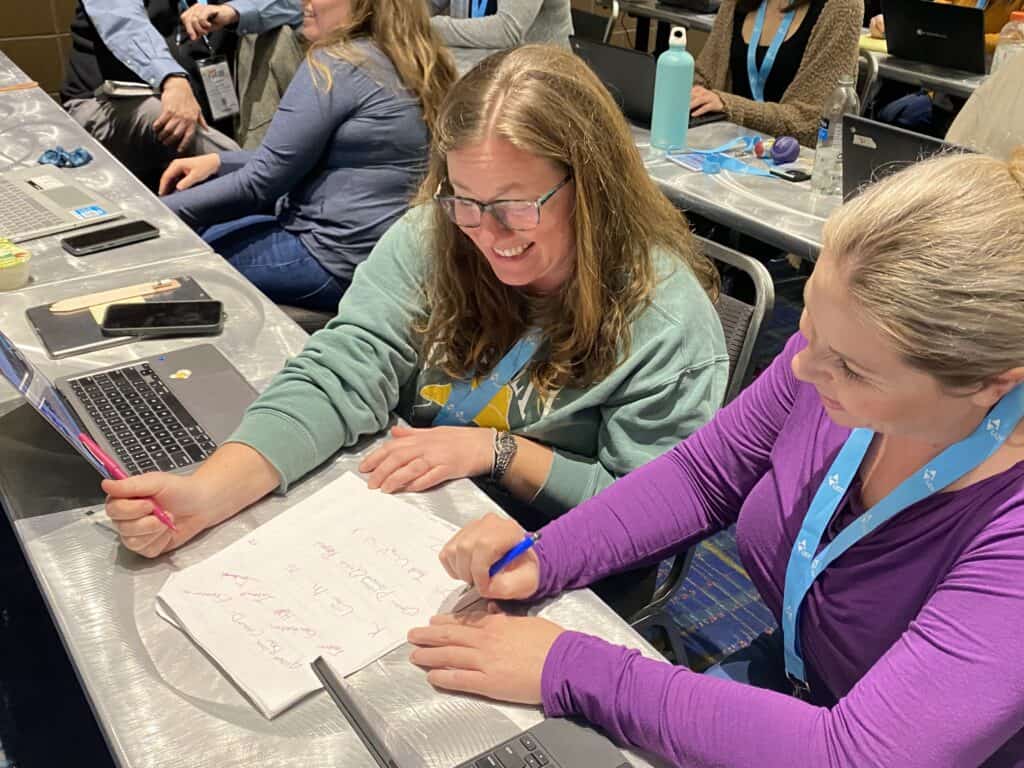
19. Nothing Beats Playing Together
If you had the chance to join us live, we were thrilled to have the opportunity to dedicate a full two hour workshop to helping teachers discover the serious science behind playful pedagogy and the chance to test drive all sorts of better ways to play that go beyond those simple button-mashing “bar trivia” style guessing games. And if you missed the in person fun? Don’t sweat it! We’ve assembled a greatest hits collection of resources and made them all available ENTIRELY FOR FREE! Simply click the Big Red Button below to take this content for a spin in your classroom with a free site membership as a Tinker Teacher.
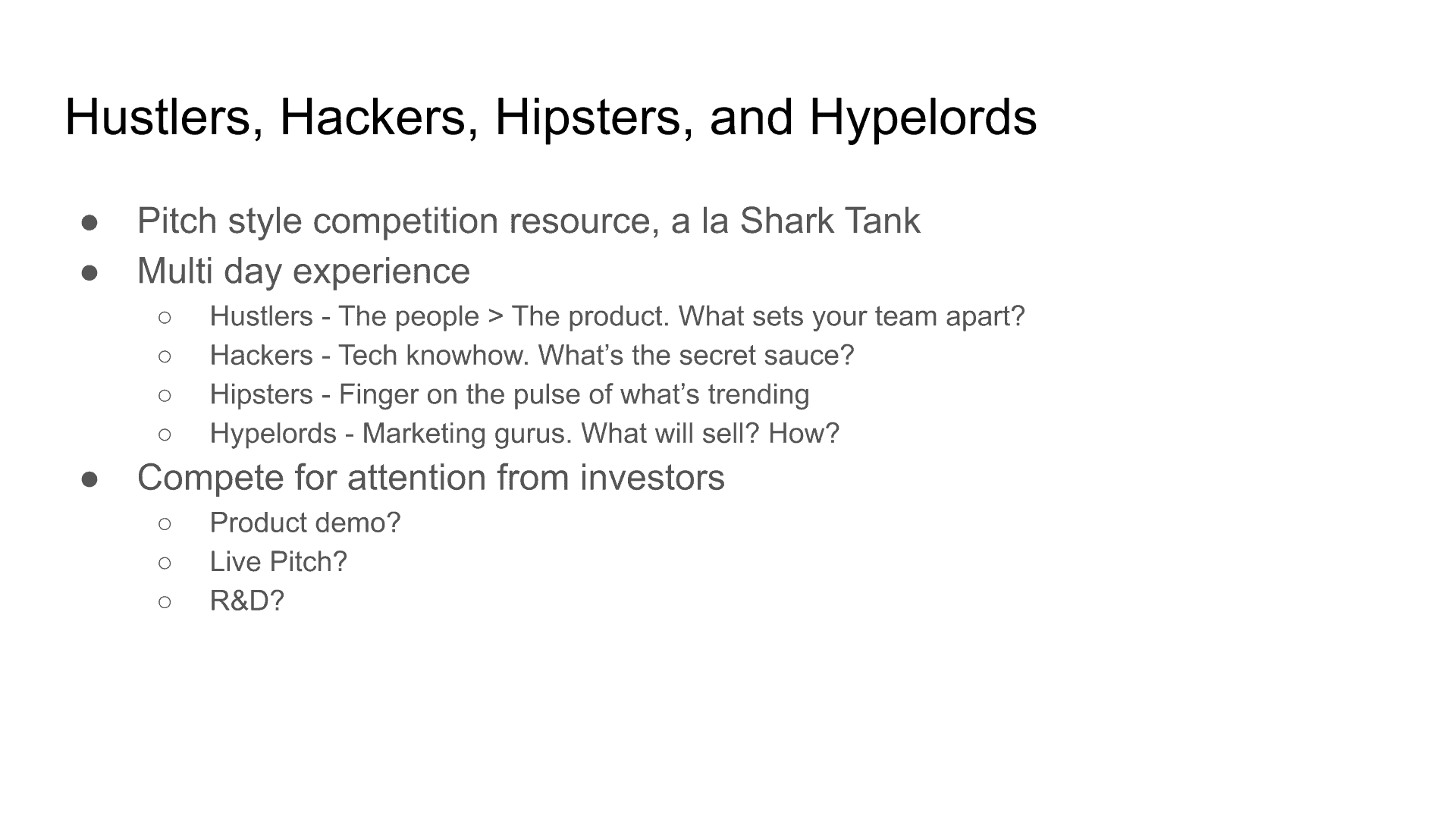
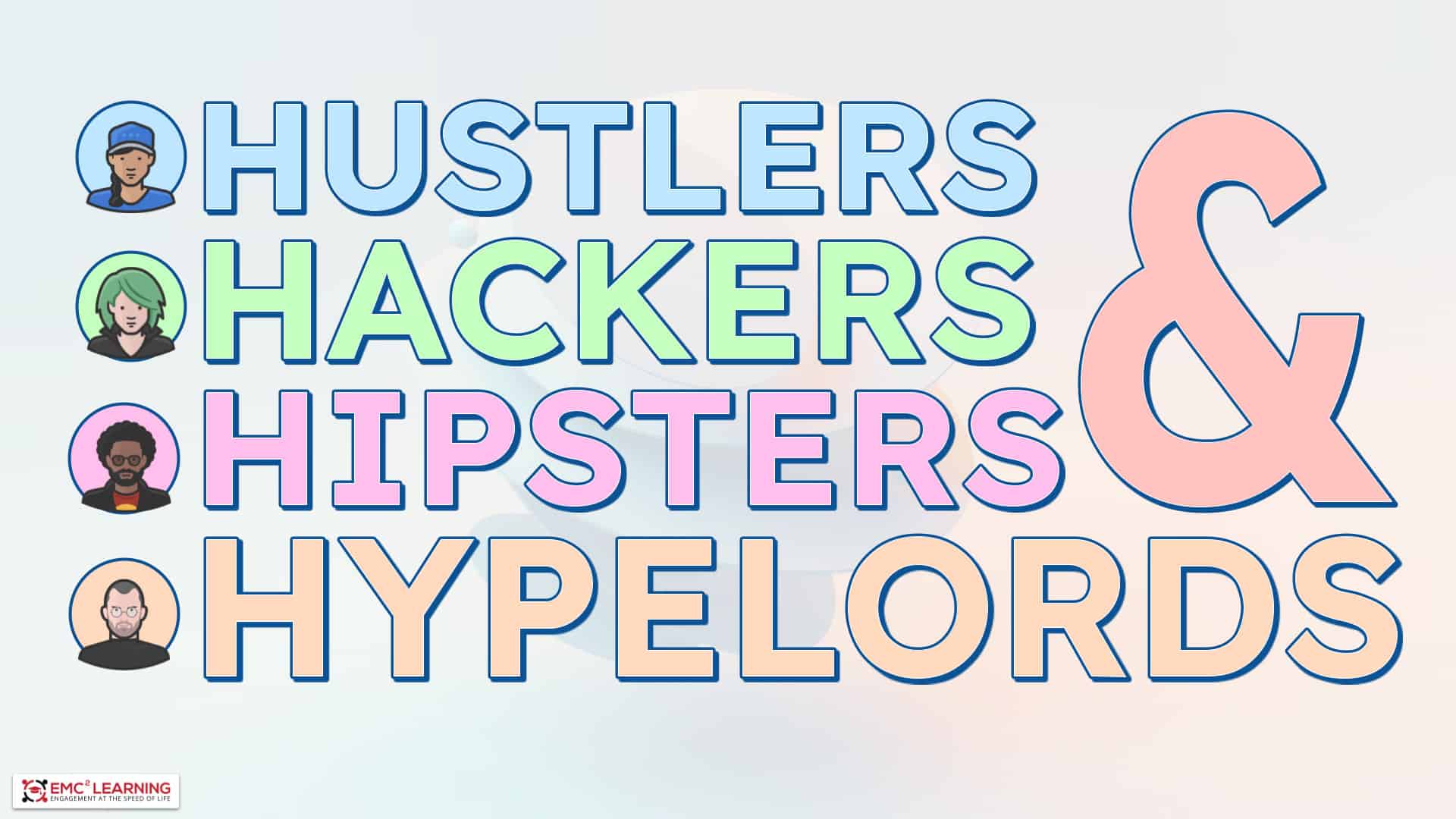
20. New Resources Are On Their Way
One of our favorite parts about attending conferences at both the national and local levels is that the conversations and presentations we have the chance to experience really do provide all sorts of inspiration to carry back to our classrooms. And thanks to the EMC² community, our classroom is your classroom too! Because each of these newly inspired ways to engage and support our learners will be added to our ever expanding library of more than 500 fully editable resources (and counting) in the weeks ahead. That means students and teachers everywhere will have the ability to take what we’ve learned and put these same strategies into play in their classrooms around the world.

21. The Smartest Person in the Room is the Room
If you missed this year’s FETC event and would like to catch up on all the conference highlights, the EMC² Learning Creative Corps offers our highest level of site membership and includes all of the resources available to Engagement Engineers plus dozens of opportunities to connect with fellow educators for virtual get-togethers where you’ve got the best seat in the house! This elite group of high fliers and early risers gets front row seats and a standing invitation to more than 30 different virtual coaching events each and every year, and there are no bags to pack or additional charges to join in the fun. Simply RSVP to join any one of these upcoming events!

22. Banning Artificial Intelligence Sites and Apps Won’t Actually Solve Anything
As educators, we completely understand many of the fears and frustrations that school systems have that surround these new and relatively uncharted waters of what is shaping up to be no less than a full-blown educational paradigm shift. We sympathize with concerns that AI, if unchecked, can be a detriment to deep learning and an ill-advised shortcut for students seeking an easy way out from assignments that require heavier lifting and sustained thought — particularly at those most foundational levels of Bloom’s Taxonomy.
But having said that —
Clumsily applying a campus-wide “block” on AI sites like ChatGPT doesn’t actually solve the problem. For one, it takes exactly zero seconds for an individual student to use their cell phone to hop onto 4G and copy/paste an entirely AI-generated response into an email or Google Doc, which they can then in turn pass off as their own. For another, this technological double standard actually ends up becoming something of a very real and very concerning equity issue — as wealthier students with at-home internet capabilities can quickly circumvent school wide bans on the use of AI while those learners without personal devices or at-home internet connections are left at the mercy of a system that punishes them for playing by the rules. Furthermore, banning the use of AI when this exact same technology is very much alive and well in all sorts of professions outside of the classroom (and, ironically, even in the anti-plagiarism detection and grading softwares that so many teachers are using in the first place) feels both short-sighted and detrimental to long-term learning.
AI is here to stay. The challenge now is to ask ourselves what we can do as educators to help prepare our students to thrive in a world that will radically be shaped and reshaped by this new reality.

23. Human Centered Instruction + Artificial Intelligence = Engagement At The Speed of Life
While critics will argue that students take shortcuts because they’re “lazy” or “entitled” — more often than not, the simple truth to the matter is that when students start to cut corners on the work that we’ve assigned them it’s typically because we’ve conditioned them to value the PRODUCT (e.g. “the grade”) over the PROCESS (“how they achieved it”). It happened with the calculator. With spellcheck. With the internet. With YouTube availability on school wifi networks. And now all over again with ChatGPT. Rather than taking the time to reevaluate how, what, and why we are teaching and helping our students learn how best to take full advantage of these new and emerging technologies — far too many schools and districts inevitably issue broad and sweeping bans across the board, and ultimately rob their students of the chance of learning how to make use of these tools ethically and effectively so as to leverage the very best of these technical marvels for good. And as a direct result, teachers find themselves in the role of de-facto “bad guy,” left with the unenviable task of trying to catch troublemaking students in the act of doing whatever they can to get away with as little actual learning as humanly possible.
(Kind of ironic that so many school systems that are quick to decry the evils of emerging technologies then immediately turn around and swear by an entire system of standardized assessments, made possible by — you guessed it! — automated machine scoring, no?)
But here’s the bottom line: the overwhelming majority of teachers don’t merely use Scantrons because they’re lazy. And students don’t use AI simply because they’re looking to pull one over on us. Both audiences crave autonomy. Mastery. And purpose. Students and teachers alike are hungry for authentic ways to learn, grow, teach, explore and understand the vast and ever-changing landscape outside of their classroom.
And without it, they can’t help but go through the motions of “playing the game of school.”
We are facing a watershed moment in the entire system of education as we know it. Rather than seeking to punish and make examples of the same students we have spent a lifetime conditioning to chase grades at the expense of actual learning, our classrooms have a powerful opportunity to reevaluate just how, exactly, we go about this entire schooling process in the first place. This means shifting our thinking. Championing process over product. Establishing a new language for performance standards where variable based goals take precedence over outdated “standards” that fail to account for the unique abilities of each learner. And helping each of our learners use relevant 21st century skills and technology to achieve goals firmly rooted in growth mindset, where individual progress is celebrated above any narrow and arbitrarily defined standards of perfection.
In short: it means changing the game.
EMC² Learning is home to more than 500 fully editable resources for any course or content area. Engagement Engineers and members of the Creative Corps enjoy a full year of access to each of these resources on demand. We hope you’ll consider joining us to unlock a full year of site access. For complete details including our exclusive limited time offer for annual site membership, click here.

